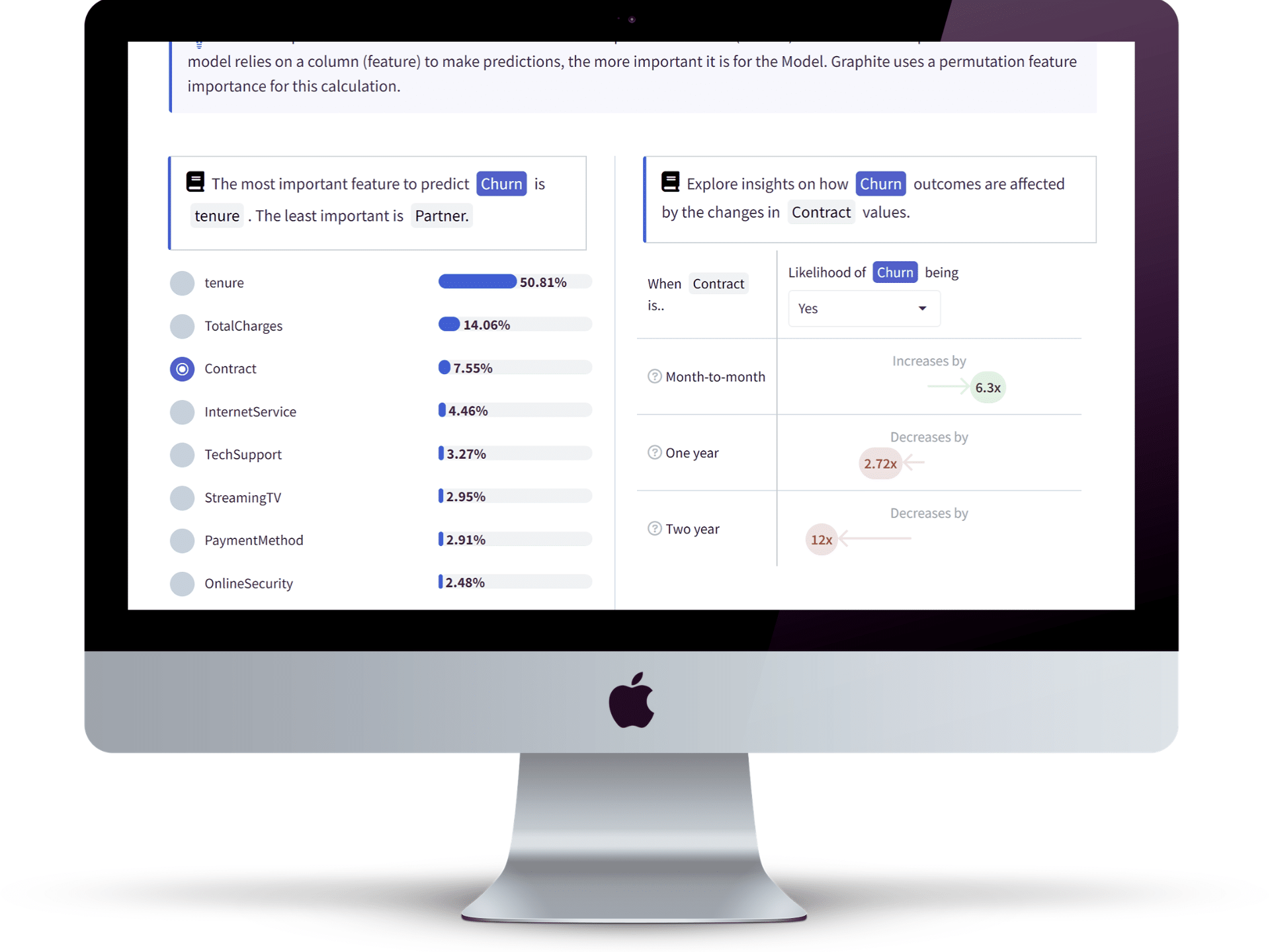Artificial Intelligence (AI) revolutionizes the way businesses make decisions and solve complex problems. One of the key tools in AI is the decision tree algorithm. A decision tree algorithm enables businesses to analyze data and make intelligent choices. In this article, we outline AI decision trees and guide. We highlight their inner workings, benefits, real-world applications, and implementation steps.
Understanding the Inner Workings of an AI Decision Tree
Decision trees are flowchart-like structures that break down complex problems into a series of simpler, easier-to-solve questions. These questions are based on different features of the dataset. Each answer leads to a subsequent question or a final decision. The decision tree diagram is a hierarchical structure. AI decision tree algorithms can efficiently process large amounts of data and provide accurate predictions. AI decision trees follow the same approach as a decision tree diagram. AI decision tree algorithms go through a process of tree learning. A leaf node, root node, internal node, and more make up a decision tree.
There are various types of decision trees. A regression tree is one type. Regression trees are a type of machine learning model. They function like a flowchart to predict continuous values. It’s similar to a regular decision tree, but instead of solving classification problems, it predicts a numerical value like customer churn probability. In a regression tree, a leaf node represents the final destination for a specific group of data points.
Let’s outline it in a real-world decision tree example. An e-commerce company is trying to predict whether a customer will churn or not. This is based on various factors such as age, purchase history, and website engagement. An AI decision tree would ask various questions. These questions could include: “Is the customer under 30 years old?” or “Has the customer made a purchase in the last month?” Based on the answers, the decision tree algorithm will navigate through the decision path. The AI decision tree algorithm will then make a prediction, such as “Yes, the customer is likely to churn” or “No, the customer is likely to stay.”
Let’s take a closer look at how the decision tree algorithm actually makes these decisions. Each decision is known as a decision node. In the decision tree diagram, decision nodes make up the tree structure. An AI decision tree algorithm works the same way as a decision tree diagram. A decision tree diagram includes leaf nodes, root nodes, chance nodes, internal nodes, and more, to make up the predictive model.
At each decision node, the algorithm evaluates the available features. The algorithm then selects the one that provides the most information gain. Information gain is a measure of how much the selected feature reduces the uncertainty in the dataset. By selecting the feature with the highest information gain, the algorithm splits the dataset into subsets that are more homogeneous in terms of the target variable. In this case, the decision tree algorithm is assessing customer churn.
Once a feature is selected, the algorithm creates a branch for each possible value of that feature. For example, if the selected feature is “Has the customer made a purchase in the last month?”, the algorithm will create two branches. One branch will be for customers who have made a purchase in the last month. Another branch will be for customers who haven’t. The algorithm then repeats this process recursively for each subset. In line with these decision rules, the algorithm will create new nodes and branches. It does this until it reaches a point where no further splitting is possible.
The beauty of AI decision trees lies in their interpretability. Decision trees give you a transparent view of how decisions are made. Decision trees are therefore easier to understand and trust. The decision analysis is easy to see. This transparency is important for businesses looking to make informed decisions and gain valuable insights from their data.
Decision trees can handle both categorical and numerical features. This makes them versatile for various types of datasets. Decision trees can also handle missing values by using surrogate splits. These are alternative splits that approximate the original split in case of missing data.
Decision trees can handle interactions between features. By splitting the dataset based on different features, decision trees can capture complex relationships and interactions that may exist between the features. This makes them particularly useful for tasks such as feature selection and variable importance analysis.
Like any AI model, decision trees also have their limitations. They can be prone to overfitting, especially when the tree becomes too deep and complex. Overfitting occurs when the model captures noise and irrelevant patterns in the training data. This leads poor generalization on unseen data. To mitigate this issue, techniques such as pruning and setting a maximum depth for the tree can be applied. AI decision trees are powerful tools for solving complex problems and making predictions based on large datasets.

Benefits and Advantages of AI Decision Trees
AI decision trees offer you several benefits. The advantages of using AI decision trees include:
- You can make more accurate predictions: AI decision trees use machine learning algorithms. Decision trees analyze historical data. Decision trees uncover patterns that can be used to predict future outcomes. This predictive power can help you anticipate customer behavior, identify potential risks, and optimize your business strategies. decision trees can identify even the most subtle patterns that might go unnoticed by human analysts. This means that you can gain key insights. You can make predictions that are beyond the capabilities of traditional analytical methods. For example, in the healthcare industry, AI decision trees can analyze patient data. They can accurately predict the likelihood of certain diseases, enabling early intervention and better patient care.
- AI decision trees are highly versatile: They can be applied to various domains, ranging from marketing and finance to healthcare and market research. Regardless of your industry, decision trees can facilitate decision-making processes and provide actionable insights. For example, in marketing, decision trees can help you identify the most effective marketing channels for different customer segments. By analyzing customer data, decision trees can determine which channels are most likely to yield the highest conversion rates. This enables you to allocate your marketing budget more efficiently. In finance, decision trees assist with credit risk assessment. Decision trees analyze customer financial data and can predict the likelihood of default.
- AI decision trees are efficient and scalable: AI decision trees can handle categorical and numerical data. Decision trees can process large datasets quickly and accurately. This scalability is especially beneficial for businesses dealing with high volumes of data. Decision trees can handle the complexity and produce results in a timely manner. For example, in the field of market research, decision trees can analyze survey responses from thousands of participants. Decision trees can provide insights on consumer preferences and behavior in a fraction of the time it would take using traditional methods.
- AI decision trees offer a human touch in the realm of artificial intelligence: Decision trees provide transparent decision-making processes. These can be easily understood and explained to stakeholders. This transparency builds trust and confidence in the decisions made by AI systems. This makes them more easily adopted and integrated into organizations. For example, in the field of healthcare, decision trees can be used to help doctors make treatment decisions. By presenting the decision-making process in a transparent manner, doctors can better understand the reasoning behind the recommendations and provide their expertise to refine the decision-making process.
Real-World Applications of Decision Trees in AI
Enhancing Marketing Campaigns with Decision Tree AI
Marketing campaigns heavily rely on understanding customer behavior and targeting the right audience. AI decision trees can be invaluable. They can analyze customer data and segment them into different groups based on demographics, purchase history, and online behavior. By tailoring marketing campaigns to each segment’s preferences, you can increase customer engagement, conversion rates, and revenue.

Making Smarter Financial Decisions with AI Decision Trees
Financial institutions deal with vast amounts of data daily. AI decision trees can analyze this data and assist in making smarter financial decisions. Decision trees provide a powerful tool to manage financial operations more effectively and efficiently.
Streamlining Loan Approval Processes with Decision Tree AI
The loan approval process can be complex and time-consuming. AI decision trees can automate and streamline this process. An AI decision tree learning algorithm can assess an applicant’s financial history, income, and other relevant factors. This speed up the approval process and ensures fair, unbiased decisions.
Maximizing Debt Collection Efforts with AI Decision Trees
Debt collection can be challenging. AI decision trees can optimize this process by prioritizing debtors based on their likelihood of repayment. Decision trees can identify the debtors with the highest probability of settling their debts. This results in a more efficient, successful debt collection strategy.
Gaining Insights through Investment Analysis with Decision Tree AI
Investment analysis requires careful evaluation of various factors. These include market trends, company performance, and economic indicators. AI decision trees can facilitate this analysis. AI decions trees provide a systematic framework that considers multiple variables and their effect on investment outcomes. Investors can make more informed and profitable investment decisions.
Revolutionizing Medical Diagnosis with AI Decision Trees
In the healthcare industry, accurate and timely diagnoses can be a matter of life and death. AI decision trees offer a powerful tool for medical professionals. AI decision trees can analyze patient data, symptoms, and medical history, leading to accurate and efficient diagnoses. Medical practitioners can improve patient outcomes, optimize treatment plans, and enhance overall healthcare delivery.
Uncovering Market Trends with Decision Tree AI in Market Research
Market research plays a crucial role in understanding consumer preferences, market trends, and competitor analysis. AI decision trees can assist researchers in unraveling complex consumer behavior patterns and identifying influential factors that drive market trends. Businesses can gain valuable market insights, enabling them to make data-driven strategic decisions.
Implementing Decision Tree AI in Your Business: A Step-by-Step Guide
It’s time to take the next step and implement them in your business. Here is a step-by-step guide to help you get started:
- Identify the problem: Determine the specific problem or decision you want to address using AI decision trees. Clearly define the objectives and the data you’ll need to collect.
- Prepare the data: Gather and clean the necessary data for analysis. Ensure that the dataset is reliable, complete, and representative of the problem you’re trying to solve.
- Feature engineering: Identify the relevant features in your dataset and engineer new features if necessary. Feature engineering can enhance the performance and accuracy of your decision tree model.
- Split the data: Divide your dataset into a training set and a testing/validation set. The training set will be used to build the decision tree model, while the testing/validation set will evaluate its performance.
- Build the decision tree: Select an appropriate algorithm and build the decision tree model using your training data. Make sure to choose the algorithm and hyperparameters that best suit your problem.
- Evaluate and fine-tune: Assess the performance of your decision tree model using the testing/validation set. Fine-tune the model by adjusting parameters or trying different algorithms to optimize its accuracy.
- Deploy and monitor: Once you’re satisfied with your decision tree model’s performance, deploy it into your business operations. Monitor its predictions and periodically retrain the model to adapt to changing data patterns.
Taking the Next Step: Embrace the Power of AI Decision Trees Today
AI decision trees are not just a futuristic concept. They revolutionize decision-making processes and empower businesses like never before. No-code predictive analytics platforms like Graphite Note can accelerate and simplify the implementation of AI decision trees. With its user-friendly interface and powerful AI capabilities, Graphite Note empowers users to create, deploy, and monitor decision tree models without the need for extensive coding or technical expertise. So, why wait? Start demystifying AI decision trees and harness their power for better business outcomes with Graphite Note today!




